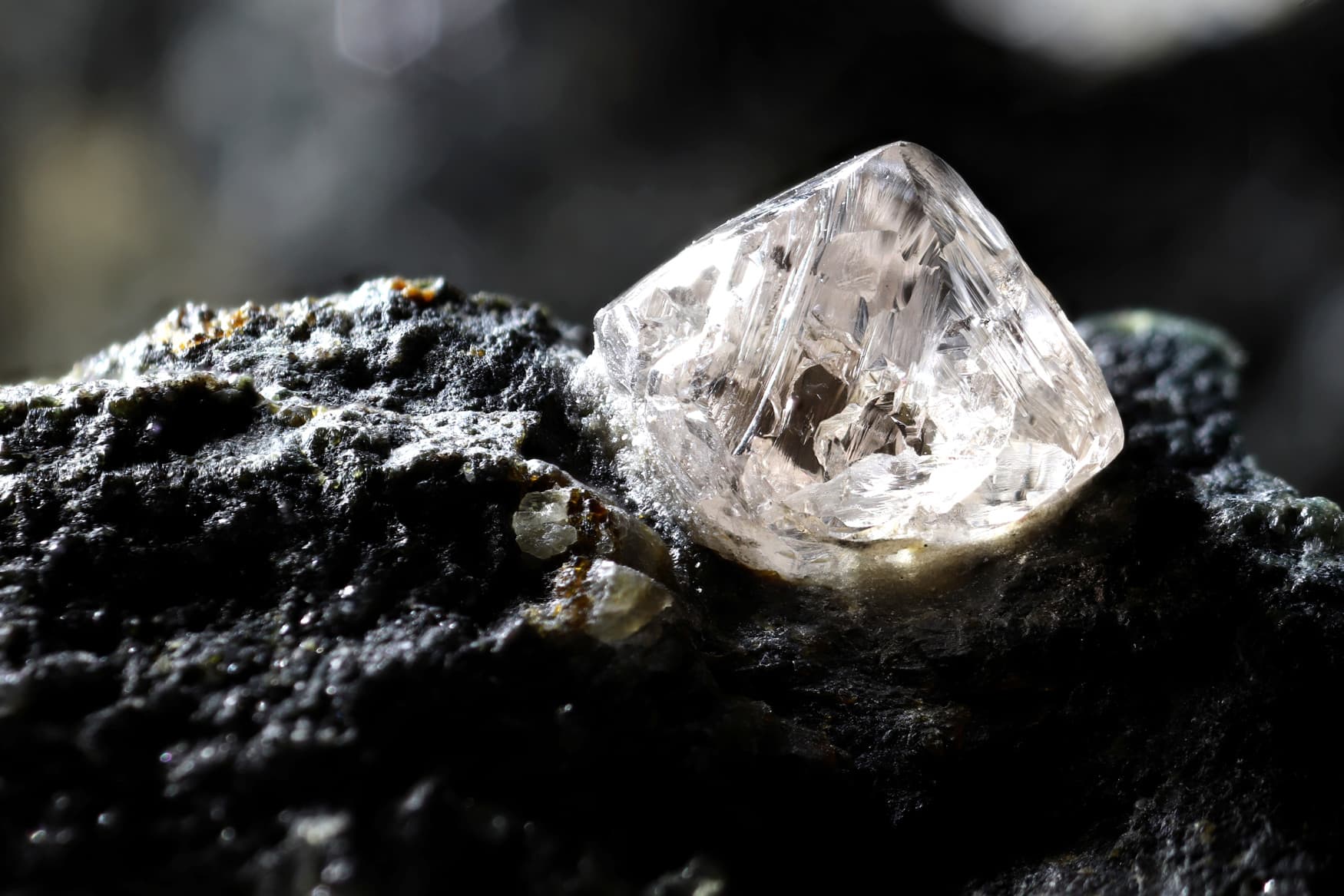Does Diamond Hardness Really Matter?
4 Minute Read
at James Allen
What Does Mineral Hardness Mean?
Mineral hardness refers to the strength of the bonds between atoms. If the bond is strong, it's harder to separate those atoms when you apply pressure. The weaker those bonds, the easier it is.
Put another way, a hard mineral can resist scratching, while a soft mineral scratches easily.
Minerals are assigned a number between 1 and 10 on the Mohs Hardness Scale to describe how resistant to scratching they are. Diamonds are given the highest number, a 10. There is nothing that can scratch a diamond except another diamond.
A mineral like talc, on the other hand, is a 1 on the scale. You could scratch it with any hard material, even your fingernail.
Take a look at the chart below for examples of minerals at each level on the Mohs Hardness Scale.
Why Are Diamonds So Resistant to Scratching?
The hardness of diamonds has everything to do with how they're made. Diamonds are made of carbon, but, contrary to popular belief, they don't come from coal.
Instead, they are formed deep in the earth's mantle. There, carbon atoms come under intense pressure and heat, making them to bond with four other carbon atoms in what is known as a covalent bond, the strongest kind of atomic bond.
Because the bond is so strong, it's hard to separate the atoms by applying pressure to the surface with another material.
Are Diamonds Really the Hardest Mineral on Earth?
Since it's given a 10 on the Mohs Hardness Scale the answer should be yes, right? But that depends on your definition of hardness.
Tenacity
Nothing can scratch a diamond, but there are plenty of things that can break or chip it. If you took a hammer to a diamond, for instance, you would smash it into many little pieces.
Tenacity measures a mineral's resistance to blows. Diamonds, like most minerals, are considered brittle, which means they can't withstand a blow.
Jade, which describes both jadeite and nephrite, is at the other end of the scale. It is described as very tough. It has been used for ax heads and other weapons as well as tools for scraping and hammering. However, jade is only a 6 on the Mohs Hardness Scale.
Cleavage
Diamonds are also easily split along what are called cleavage lines, which are a lot like the grains in wood. Cleavage is measured as perfect, good, fair, or poor.
Diamonds have perfect cleavage. That's great for diamond cutters who can get two perfect stones with smooth surfaces at the cleaving point from a stone. It's bad, however, for you because it means a diamond can chip easily.
Do Diamonds Differ in Hardness?
The simple answer to this question is yes.
The direction in which a faceter cuts a diamond does affect its hardness. A lot of gem-quality diamonds are cut in a way that "softens" the diamond simply because it's the best way to bring out the most sparkle, fire, and scintillation.
However, even the softest diamond is still considerably harder than a sapphire or a ruby, are assigned a nine on the Mohs scale.
Should I Consider the Mohs Hardness Number?
If you're deciding between different gemstones for something like an engagement ring, which is typically worn every day, the Mohs Hardness number, along with a mineral's tenacity and cleavage, should be considered.
Gems with a low hardness number will scratch easily with everyday wear. So, a gem like an opal, which ranges between a 5.5 and 6.5, will lose its luster as it gets scratched over time.
at Blue Nile
That's one of the reasons diamonds are such a popular choice for engagement rings and other jewelry pieces. They will remain lustrous for years to come because they don't get scratched.
If your heart is set on a diamond, there really is no need to consider its hardness. All diamonds are exponentially harder than all other minerals, and a variance of a couple of decimal points won't make much difference.
How Can I Protect My Diamond From Chipping?
How you set your diamond will determine how well it's protected from chipping. A bezel setting, for example, will protect all edges of your diamond. That's great for a fancy shape like a heart, which has edges that can chip easily.
at Blue Nile
A prong setting can also protect diamond points like those found in marquise and heart-shaped diamonds.
at Blue Nile
It's true that diamonds are the hardest mineral on earth, but that doesn't mean it's not fragile. Protect your diamond with the right setting and you'll have a beautiful piece that will last for years.
Laurie Mega
Related Articles
Orange Diamond Buying Guide – Orange Diamond or White Whale?
Old European-Cut Diamonds: the Complete Guide
Diamond Buying and the Four Cs, Part 3: Evaluating Diamond Cuts
Diamond Girdles: 11 Facts You Need to Know
Never Stop Learning
When you join the IGS community, you get trusted diamond & gemstone information when you need it.
Get Gemology Insights
Get started with the International Gem Society’s free guide to gemstone identification. Join our weekly newsletter & get a free copy of the Gem ID Checklist!
